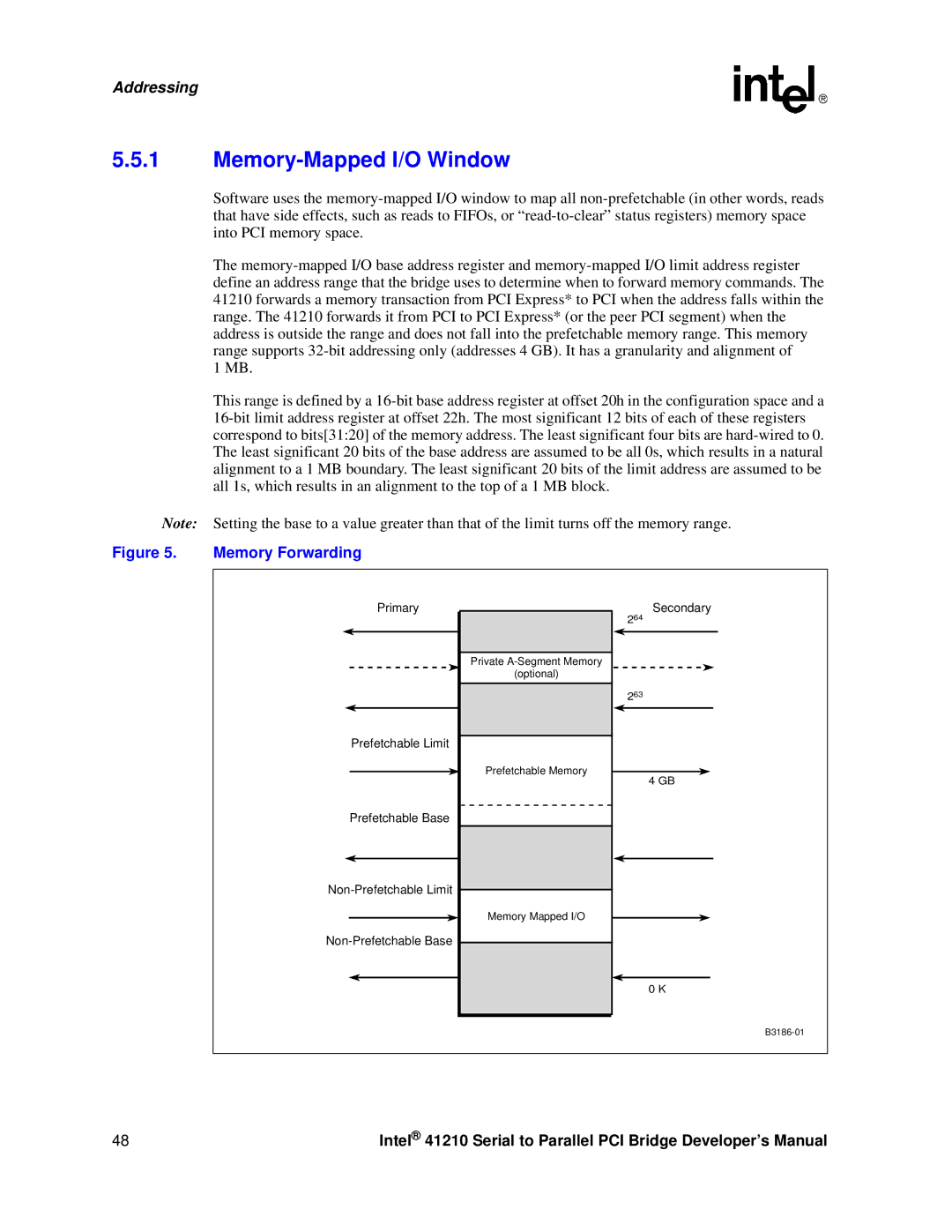
Addressing
5.5.1Memory-Mapped I/O Window
Software uses the
The
1 MB.
This range is defined by a
Note: Setting the base to a value greater than that of the limit turns off the memory range.
Figure 5. Memory Forwarding
Primary
Prefetchable Limit
Prefetchable Base
Private
(optional)
Prefetchable Memory
Memory Mapped I/O
Secondary
264
263
4 GB
0 K
48 | Intel® 41210 Serial to Parallel PCI Bridge Developer’s Manual |
